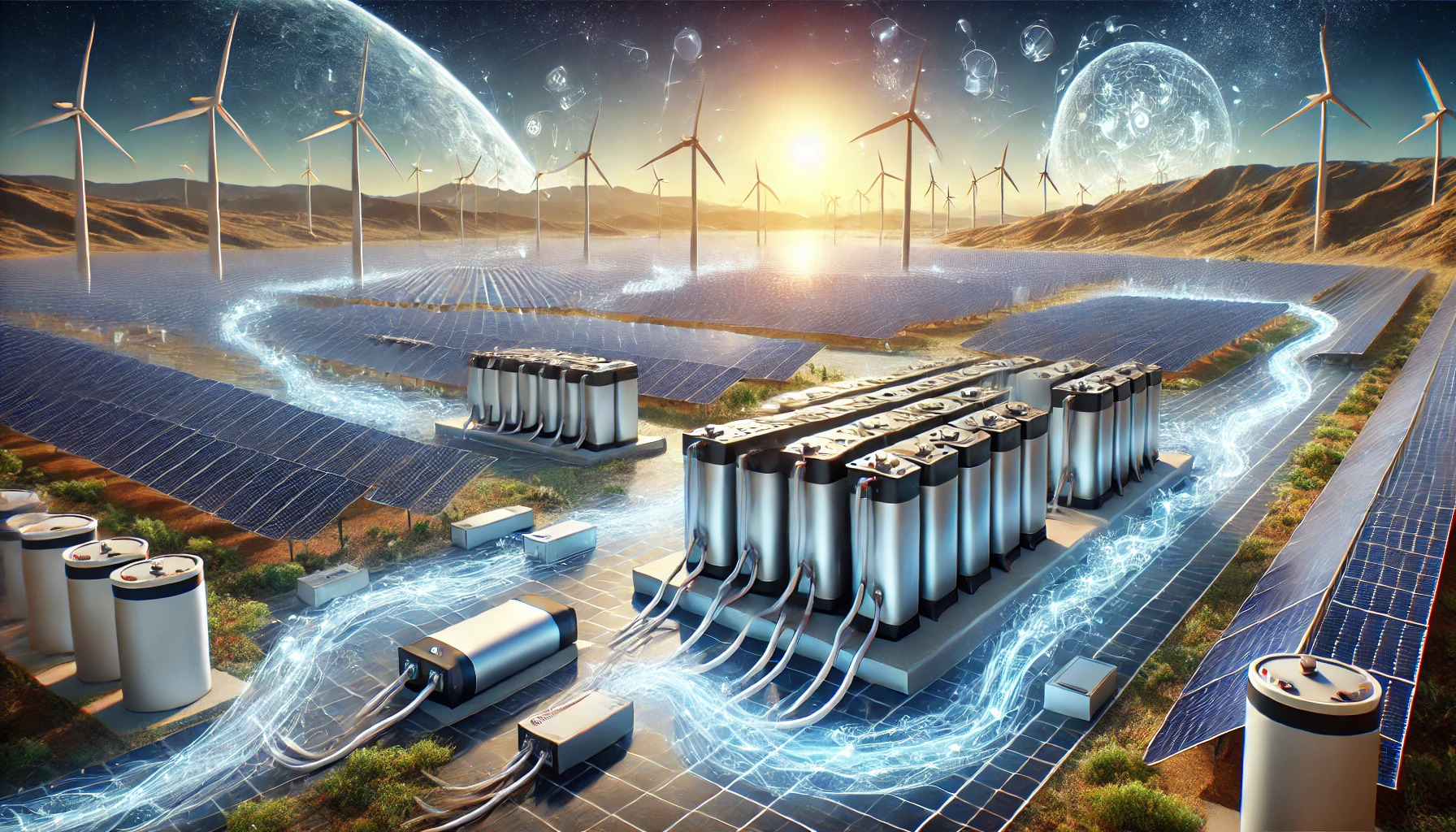Battery Storage Breakthroughs: Powering the Renewable Revolution

Introduction to the Power Problem
Renewable energy sources like solar and wind are fantastic—when the sun is shining or the wind is blowing. But what happens when Mother Nature takes a nap? That’s where energy storage swoops in like a superhero to save the day! The problem, though, has always been finding a reliable, large-scale energy storage system to keep the lights on when the sun sets or the wind dies down. Enter the latest advancements in battery storage technology, which are shaping up to be game-changers for the renewable revolution.
Solid-State Batteries: The Shiny New Hero
First up, we’ve got solid-state batteries. These are the cool kids in the energy storage playground. Unlike traditional lithium-ion batteries, which use liquid electrolytes, solid-state batteries ditch the liquid for—you guessed it—solids! This switch isn’t just for fun; it’s a big deal because solid-state batteries are safer, pack more energy, and can last longer. That means fewer fiery explosions (we’re looking at you, lithium-ion) and more bang for your buck in terms of energy density. With companies like Toyota and QuantumScape making big strides, it’s only a matter of time before these batteries are powering everything from electric cars to entire power grids.
Flow Batteries: The Big Guns of Energy Storage
Next, we’ve got flow batteries, the heavyweight champs of large-scale energy storage. Unlike solid-state batteries, flow batteries are designed to handle massive amounts of energy over long periods of time. Think of them as the marathon runners of the battery world. They use liquid electrolytes stored in external tanks, which means you can scale them up by simply adding more tanks. This makes flow batteries ideal for grid storage, where you need to store renewable energy for days or even weeks at a time. Companies like ESS Inc. are pushing the boundaries of this tech, promising to make renewable energy storage cheaper, more reliable, and, most importantly, scalable.
Why Energy Storage Matters for Renewables
Here’s the thing—renewable energy sources are inconsistent. Solar panels don’t generate electricity at night (unless you’ve got a really creative way of bending the laws of physics), and wind turbines stop when the breeze takes a break. Large-scale battery storage systems like solid-state and flow batteries are crucial because they can store excess energy when it’s available and release it when it’s not. This kind of energy smoothing is essential for making renewable energy a reliable power source year-round. Plus, with the rise of electric vehicles and smart cities, demand for reliable, clean energy storage is skyrocketing.
The Future of Battery Storage: Beyond Just Batteries
While solid-state and flow batteries are leading the charge (pun intended), they’re not the only innovations in the energy storage game. Scientists are working on a range of next-gen technologies like supercapacitors and gravity-based storage systems. Yep, you read that right—gravity could soon be storing your energy. Imagine massive weights being hoisted up when energy is plentiful, only to be released slowly when you need power. It’s like a giant, renewable yo-yo for your electricity grid! Combined with advancements in AI-driven energy management, the future of energy storage looks bright and supercharged.
Conclusion: What’s Next for Energy Storage?
So, whether it’s solid-state batteries revolutionizing electric cars or flow batteries turning renewable energy into a constant source of power, the future of energy storage is here, and it’s looking pretty electrifying. But with so many new technologies on the horizon, one big question remains: Which breakthrough will truly power the renewable revolution? What do you think—will solid-state batteries lead the charge, or will flow batteries take the crown?



